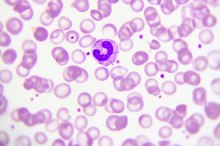The Similarities Between a Sperm and an Ovum
The human reproductive system is a complex network of cells, ducts, tubes and small organs. While the male and female have different structures within their respective reproductive system, they do have one thing in common: reproductive cells known as sperm and ova (plural of ovum). Both sperm and ova have a few similarities.
Similarities
The sperm and ovum are similar in a handful of ways: Both are used for reproduction, both have the same number of chromosomes, and both are produced by the same process of gamete formation (the formation of sex cells).
Reproduction
How Long Does Sperm Stay in a Woman's Body?
Learn More
Both the sperm and the ovum are reproductive cells, meaning that they are both needed for reproduction. The sperm and ovum (also called an egg) combine to create another generation.
Survival Rate
Both the sperm and ovum can survive for a brief period of time after release. The sperm is viable for a period of 72 hours in the female genital tract, while the ovum is capable of surviving only 24 to 48 hours.
Haploid
Differences Between Antibody & Antibiotic
Learn More
Both sperm and ova are haploid. According to Medicine Net, a haploid is “a set of chromosomes containing only one member of each chromosome pair 1. The sperm and egg are haploid and, in humans, have 23 chromosomes.” If both sperm and egg carried the entire 46 chromosomes (also called diploid), when a new generation was created, the offspring would have double the amount of the generation before. That is why the process of meiosis is useful.
Meiosis
Both sperm and ova are produced by meiosis. Meiosis is a type of cell division that refers to how the sex cells are formed. Two cell divisions occur in this process, in which the 46 chromosomes (diploid) are reduced to the 23 chromosomes (haploid). .
- Both sperm and ova are produced by meiosis.
- Two cell divisions occur in this process, in which the 46 chromosomes (diploid) are reduced to the 23 chromosomes (haploid).
- .
Differences
Sperm are microscopic, but human ova are roughly the diameter of a strand of hair and can be seen with the naked eye. Only one ovum is released during ovulation in a female, while millions of sperm are released in each male ejaculation. Sperm are mobile; they have a tail with which to move around. Ova cannot move on their own.
- Sperm are microscopic, but human ova are roughly the diameter of a strand of hair and can be seen with the naked eye.
- Sperm are mobile; they have a tail with which to move around.
Related Articles
References
Writer Bio
Jennifer Sobek has been a writer since 1993, working on collegiate and professional newspapers. Her writing has appeared in the "Copperas Cove Leader Press," "Fort Lewis Ranger," "Suburban Trends" and "The Shopper News," among others. Sobek has a Bachelor of Arts in journalism from Rowan University.









